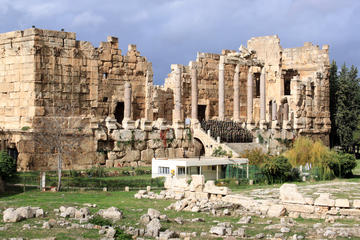Baalbek
TIME : 2016/2/22 11:54:57

Baalbek
Set 53 miles (85 kms) outside of Beirut in the fertile Beqaa Valley, the ancient city of Baalbek is inarguably Lebanon’s greatest Roman treasure. An architectural pinnacle of empire known to the Romans as Heliopolis, this UNESCO World Heritage site has served as a center of worship for a staggering number of millennia.
Civilizations as old as the Phoenicians worshiped here and themselves built massive stone structures to “Baal”, revered Phoenician deity and possible subject for the town’s name of Baalbek. With the arrival of the Romans in 64 BC, Baalbek was converted to a pagan center of worship and work was begun on the massive Temple of Jupiter, a hulking structure of granite columns which would eventually become the largest temple ever built in the history of the Roman Empire. While many of the columns have crumbled and eight were even relocated to the Hagia Sophia in Istanbul, six columns still remain standing and provide a relevant framework for the sheer size of the ancient Roman ruins.
Confounding to scholars at the Temple of Jupiter are the dimension and weight of the stones which are used in the platform of the temple. While many of the stones comprising the foundation already weigh in excess of 450 tons, three gargantuan stones 14 ft. high and 64 ft. in length are believed to weigh over 1000 tons. These are known as the Trilithon, and they are one of the most mysterious elements of ancient architecture found anywhere in the world.
In addition to the Temple of Jupiter visitors can walk among the ornately designed Temple of Bacchus as well as the smaller Temple of Venus, the three of which comprise the triad of deities that Baalbek was centered around: Jupiter, Venus and Mercury.
Humbling in their size and stupefying in their architectural history, the ancient ruins of Baalbek are on par with any other ruins and wonders of the ancient world.
